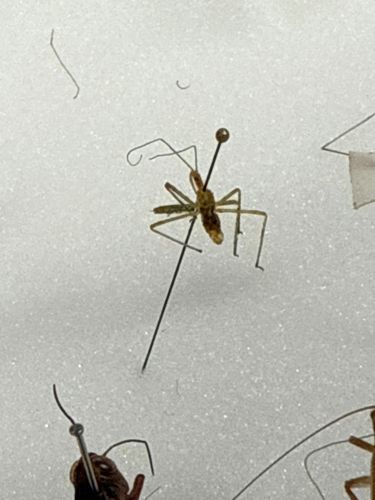Assassin Bug
Scientific Name: Reduviidae (various genera and species)
Order & Family: Hemiptera, Reduviidae
Size: Typically 5 mm to 40 mm (0.2 to 1.6 inches), depending on the species.

Natural Habitat
Highly varied, including forests, fields, gardens, desert areas, and even human dwellings. They are found worldwide in terrestrial environments.
Diet & Feeding
Predatory; they feed on a wide variety of other insects, including flies, caterpillars, beetles, and even other bugs. Some specialized species feed on vertebrates (like the blood-feeding Triatominae, known as 'kissing bugs'). They use their piercing-sucking mouthparts (rostrum) to inject a potent saliva that paralyzes prey and liquefies its internal tissues, which they then suck out.
Behavior Patterns
Assassin bugs are generally solitary predators. Many species are ambush predators, waiting for prey to come within striking distance, while others actively hunt. Some species, like the wheel bug, are known for their distinctive spiny 'cogwheel' structure on the pronotum. They undergo incomplete metamorphosis, with nymphs hatching from eggs and gradually growing into adults through several instars. Some species are attracted to lights at night.
Risks & Benefits
Benefits: They are highly beneficial in agricultural settings and gardens as natural biological control agents, preying on many pest insects. Risks: While most species are not aggressive towards humans, if handled carelessly or provoked, an assassin bug can inflict a painful bite with its rostrum. This bite, though painful, is generally not medically significant for most people, causing temporary localized pain, redness, and swelling. However, a specific subfamily of assassin bugs (Triatominae, or 'kissing bugs') are vectors for Chagas disease, particularly in Central and South America, by transmitting the parasite Trypanosoma cruzi through their feces. The particular insect in the image does not appear to be a 'kissing bug'.
Identified on: 9/19/2025